 W
WThe culture of Vietnam is one of the oldest in Southeast Asia, with the ancient Bronze age Đông Sơn culture considered to be one of its most important progenitors. Although geographically Southeast Asian, Vietnamese culture was heavily influenced by Chinese culture in terms of politics, government, social and moral ethics, and art due to 1000 years of Chinese rule. Vietnam is considered to be part of the East Asian cultural sphere together with North Korea, South Korea, Japan, Taiwan and China.
 W
WThe areca nut is the seed of the areca palm, which grows in much of the tropical Pacific, Southeast and South Asia, and parts of east Africa. It is commonly referred to as betel nut, not to be confused with betel leaves that are often used to wrap it. The term areca originated from the Malayalam word aḍaykka (അടയ്ക്ക) and dates from the 16th century, when Dutch and Portuguese sailors took the nut from Kerala to Europe. Consumption has many harmful effects on health and is carcinogenic to humans. Various compounds present in the nut, including arecoline, contribute to histologic changes in the oral mucosa. It is known to be a major risk factor for cancers of the mouth and esophagus. As with chewing tobacco, its use is discouraged by preventive efforts. Consumption by hundreds of millions of people worldwide – mainly with southern and eastern Asian origins – has been described as a "neglected global public health emergency".
 W
WChampa was an Indianised civilization within the Greater India that flourished along the coasts of what is now central and southern Vietnam for roughly a one thousand-year period between 500 and 1500 AD. The original Chams were probably colonists from the Indonesian islands, who adopted as their principal vocations those of trade, shipping, and piracy. Their cities were ports of call on important trade routes linking India, China and the Indonesian islands. The history of Champa was one of intermittent conflict and cooperation with the people of Java, the Khmer of Angkor in Cambodia and Đại Việt (Annam) of the Vietnamese in what is now northern Vietnam. It was to Dai Viet that Champa finally lost its independence.
 W
WThe betel is a vine of the family Piperaceae, which includes pepper and kava. Betel leaf is mostly consumed in Asia, and elsewhere in the world by some Asian emigrants, as betel quid or in paan, with areca nut and/or tobacco.
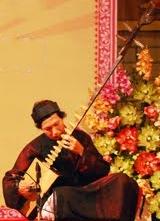 W
WCa trù, also known as hát cô đầu or hát nói, is a Vietnamese genre of musical storytelling performed by a featuring female vocalist, with origins in northern Vietnam. For much of its history, it was associated with a pansori-like form of entertainment, which combined entertaining wealthy people as well as performing religious songs for the royal court.
 W
WTuồng cải lương is a form of modern folk opera in Vietnam. It blends southern Vietnamese folk songs, classical music, hát tuồng, and modern spoken drama.
 W
WChèo is a form of generally satirical musical theatre, often encompassing dance, traditionally performed by Vietnamese peasants in northern Vietnam. It is usually performed outdoors by semi-amateur touring groups, stereotypically in a village square or the courtyard of a public building, although it is today increasingly also performed indoors and by professional performers. Chèo stage art is one of the great cultural heritage of the Vietnamese folk treasure. Chèo has been a popular art form of the Vietnamese people for many generations and has fostered the national spirit through its lyrical content.
 W
WChú Tễu is a typical puppet in Vietnamese water puppetry. Tễu is bigger than other puppets. This character usually introduces the performance and makes humorous actions for the audience.
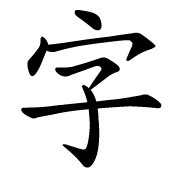 W
WA courtesy name, also known as a style name, is a name bestowed upon one at adulthood in addition to one's given name. This practice is a tradition in the Sinosphere, including China, Japan, Korea, and Vietnam.
 W
WKim Bác Sơn is a small gilded metal ornament to decorate courtier's cap in the Nguyễn dynasty. It is thought to first appear in the late Lê dynasty.
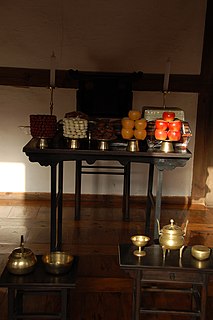 W
WA death anniversary is the anniversary of the death of a person. It is the opposite of birthday. It is a custom in several Asian cultures, including Azerbaijan, Armenia, Cambodia, China, Georgia, Hong Kong, Taiwan, India, Myanmar, Iran, Israel, Japan, Bangladesh, Korea, Nepal, Pakistan, the Philippines, Russia, Sri Lanka and Vietnam, as well as in other places with significant overseas Chinese, Japanese, Jewish, Korean, and Vietnamese populations, to observe the anniversary on which a family member or other significant individual died. There are also similar memorial services that are held at different intervals, such as every week.
 W
WDong Ho painting, full name Đông Hồ folk woodcut painting is a line of Vietnamese folk painting originating in Đông Hồ village.
 W
WEast Asian age reckoning originated in China and continues in limited use there along with Japan and Vietnam, and is still common in Korea. People are born at the age of one, i.e. the first year of lifetime using an ordinal numeral, and on Chinese New Year or New Year's Day one year is added to their age. That is, age is the number of calendar years in which they have lived. Since age is incremented at the beginning of the lunar or solar year, rather than on the anniversary of a birthday, people may be one or two years older in Asian reckoning than in the international age system.
 W
WThe East Asian cultural sphere, Chinese cultural sphere or Sinosphere encompasses the countries within East and Southeast Asia that were historically influenced by Chinese culture. Although similar concepts, the region is not to be confused with Greater China or the Sinophone world, which would include other countries such as Malaysia and Singapore.
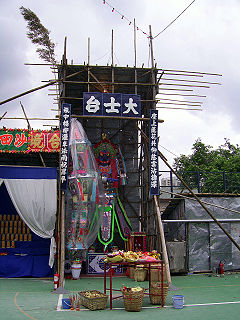 W
WThe Ghost Festival, also known as the Hungry Ghost Festival, Zhongyuan Jie (中元節), Gui Jie (鬼節) or Yulan Festival is a traditional Buddhist and Taoist festival held in certain East Asian countries. According to the Chinese calendar, the Ghost Festival is on the 15th night of the seventh month.
 W
WA death anniversary is the anniversary of the death of a person. It is the opposite of birthday. It is a custom in several Asian cultures, including Azerbaijan, Armenia, Cambodia, China, Georgia, Hong Kong, Taiwan, India, Myanmar, Iran, Israel, Japan, Bangladesh, Korea, Nepal, Pakistan, the Philippines, Russia, Sri Lanka and Vietnam, as well as in other places with significant overseas Chinese, Japanese, Jewish, Korean, and Vietnamese populations, to observe the anniversary on which a family member or other significant individual died. There are also similar memorial services that are held at different intervals, such as every week.
 W
WHát tuồng or hát bội is a form of Vietnamese theatre. Hát tuồng is often referred to as classical "Vietnamese opera" influenced by Chinese opera.
 W
WA karaoke box is a type of karaoke establishment commonly found in East Asia, Southeast Asia, South Asia, the United States and Canada. It originated in Japan, and is now popular worldwide, particularly in Asia. Karaoke boxes consist of multiple rooms containing karaoke equipment, usually rented out for a period of time. A typical karaoke box establishment contains 10–20 such rooms, that can be themed so that each room has a different feeling or can be a traditional karaoke box, as well as have a main karaoke bar area in the front. Karaoke box establishments often sell beverages, and sometimes food but sometimes the establishment offers free refreshments. Many people of all ages enjoy karaoke as a pastime in Japan, as it still has a huge influence in the Japanese music scene and it is also a place that can attract tourists as well. One blogger, who is a fan of karaoke, writes "...to sing karaoke is to embrace the moment that your love of song transcends your love of self." While people do go to and enjoy karaoke boxes with family and friends, people also go by themselves and are able to enjoy the comfort of performing in the room by themselves. There is also a different style of karaoke, the traditional type where the patrons sing in front of everyone that is also still offered in popular entertainment areas, rather than the private boxes.
 W
WThis is a list of historical and contemporary states and dynasties where Confucianism was/is the state ideology or exerted/exerts significant politico-cultural influence. Its status could have been shared with other ideologies and/or religions such as Taoism, Buddhism or the Chinese folk religion at some point in time.
 W
WThe lò trấu is a type of versatile fuel burning cook stove used in Vietnam since the 1950s. Lò trấu comes from lò (stove) and trấu. A kitchen with this kind of stove is a bếp trấu, "husk kitchen."
 W
WA mandarin square, also known as a rank badge, was a large embroidered badge sewn onto the surcoat of an official in Imperial China, Korea, Vietnam, and the Ryukyu Kingdom. It was embroidered with detailed, colourful animal or bird insignia indicating the rank of the official wearing it.
 W
WMulian Rescues His Mother or Mulian Saves His Mother From Hell is a popular Chinese Buddhist tale first attested in a Dunhuang manuscript dating to the early 9th century CE. It is an elaboration of the canonical Yulanpen Sutra which was translated from Indic sources by Dharmarakṣa sometime between 265 and 311 CE. Maudgalyayana, whose abbreviated Chinese transliteration is Mulian, seeks the help of the Buddha to rescue his mother, who has been reborn in the preta world or in the Avici Hell, the karmic retribution for her transgressions. Mulian cannot rescue her by his individual effort, however, but is instructed by the Buddha to offer food and gifts to monks and monasteries on the fifteenth day of the seventh lunar month, which established the Ghost Festival. While Mulian's devotion to his mother reassured East Asians that Buddhism did not undermine the Confucian value of filial piety and helped to make Buddhism into a Chinese religion, it also reflected strong undercurrents of filial piety that existed throughout Indian Buddhism as evidenced through its canonical texts and epigraphical remains.
 W
WNorthern Vietnam, Central Vietnam and Southern Vietnam are the three main historic, geographic and cultural regions within Vietnam. Each region consists of subregions, with considerable cultural differences originating from each subregions.
 W
WÔ ăn quan is a traditional Vietnamese children's board game. This game is valuable for enhancing calculating and strategical ability.
 W
WPaan is a preparation combining betel leaf with areca nut widely consumed throughout Southeast Asia, South Asia and East Asia. It is chewed for its stimulant effects. After chewing, it is either spat out or swallowed. Paan has many variations. Slaked lime (chuna) paste is commonly added to bind the leaves. Some preparations in the Bengali subcontinent include katha paste or mukhwas to freshen the breath.
 W
WThe Western-influenced popular music of Vietnam developed from the 1940s–1980s.
 W
WLạc Long Quân is a semi-mythical King of Hồng Bàng Dynasty of ancient Vietnam. Quân was the son of Kinh Dương Vương, the first Hung king. He is the main figure in the Vietnamese creation myth of Lạc Long Quân-Âu Cơ.
 W
WIn Chinese and other East and Southeast Asian societies, a red envelope, red packet or red pocket is a monetary gift which is given during holidays or special occasions such as weddings, graduation or the birth of a baby.
 W
WA Star lantern is a traditional Vietnamese toy often used in Mid-Autumn Festival. The toy is made from bamboo, Neohouzeaua coloured paper and jute. The toy is highly regarded in Vietnamese society as a unique and distinct part of Mid-Autumn Festival and are handmade in specialized traditional craft villages.
 W
WTheatre of Vietnam comprises many traditional forms of drama which survive and retain their popularity to varying degrees.
 W
WThe Three Friends of Winter is an art motif that comprises the pine, bamboo, and plum. The Chinese celebrated the pine, bamboo and plum together, as they observed that these plants do not wither as the cold days deepen into the winter season unlike many other plants. Known by the Chinese as the Three Friends of Winter, they later entered the conventions of East Asian culture. Together they symbolize steadfastness, perseverance, and resilience. They are highly regarded in Confucianism and as such represent the scholar-gentleman's ideal.
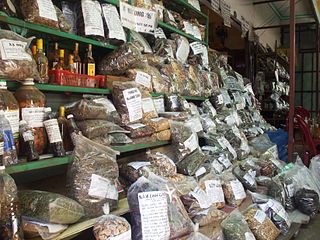 W
WTraditional Vietnamese medicine, also known as Southern Herbology is a traditional medicine practiced by Vietnamese people. It is influenced by traditional Chinese medicine. The other traditional medicine that is also practiced in Vietnam is traditional Chinese medicine, also known as Northern Herbology. Thuốc Nam is one of two kinds of folk remedies known to villagers, the other being the traditional exercise dưỡng sinh.
 W
WTò he is a traditional toy for children in Vietnam which is made from glutinous rice powder in form of edible figurine such as animals, flowers or characters in folk stories. In the past, tò he was made and sold only on the occasion of festivals, especially the Tết and the Trung Thu which are the favorite festivals of Vietnamese children. Nowadays, the toy is introduced in almost all traditional festivals and in public places like parks or gardens. As tò he is one of the rare surviving traditional toys of Vietnam, the art of tò he making is considered a cultural ambassador of Vietnam and there are many efforts in order to preserve and develop this traditional art.
 W
WThe traditional Vietnamese wedding is one of the most important ceremonies in Vietnamese culture, which is influenced by Confucian and Buddhist ideologies.
 W
WVietnamese calligraphy relates to the calligraphic traditions of Vietnam. It includes calligraphic works using a variety of scripts, including historical chữ Hán, Chữ nôm, and the Latin-based chữ Quốc ngữ. Historically, calligraphers used the former two scripts. However, due to the adoption of the Latin-based chữ Quốc ngữ, modern Vietnamese calligraphy mainly uses Latin script since 1920s.
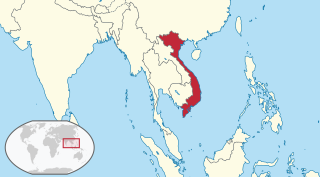 W
WVietnamese studies in general is the study of Vietnam and things related to Vietnam. It refers, especially, to the study of modern Vietnamese and literature, history, ethnology, and the philological approach, respectively.
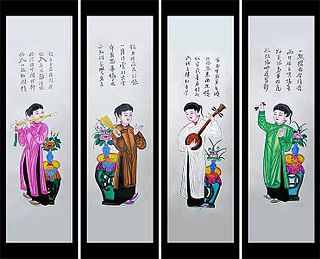 W
WThe Vietnamese zodiac is the traditional Vietnamese classification scheme based on the lunar calendar that assigns an animal and its reputed attributes to each year in a repeating 12-year cycle. Instead of centuries, the Viet lunar calendar is divided into 60-year cycles known as hồi. Each of these consists of five 12-year animal cycles.
 W
WWater puppetry is a tradition that dates back as far as the 11th century when it originated in the villages of the Red River Delta area of northern Vietnam. Today's Vietnamese water puppetry is a unique variation on the ancient Asian puppet tradition.